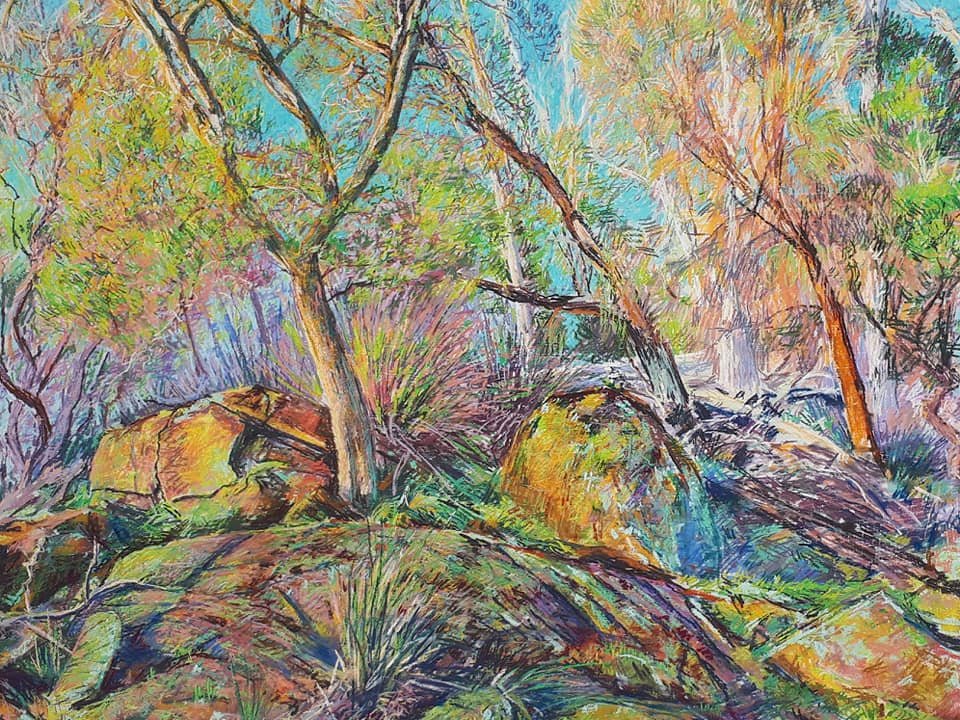'Midwinter Spring is its own season'
Series of 5 panels, tempera pastel on gesso June to September 2010. No 2. 4 ft x 3 ft or 1m20x 92cm.
Paintings are born from other paintings and that can include the paintings by another artist.
Although the subject of all these paintings was the piercing brilliance of the light in the Tasmanian winter and the richness, by contrast, of the colour in the shadows, the 'colour idea’ had been haunting me for years, ever since I had looked closely at some of the Monets in the Courtauld Museum many years before, and even copied some of them.
I had wondered then and since how Monet could convey such a sensation of warmth using a very minimal palette of orange and violet to evoke the feeling of sunlight on trees or buildings and I include two of my very slight sketch copies here to explain the process.
These were not full copies, they were notes, and each time I went back from Tasmania to London ( about once every 10 years) I could never resist reacquainting myself with all of the painters of the nineteenth century who had changed, over a couple of generations, the way we see colour.
Monet was not alone in this of course. Van Gogh had showed the world how to use yellow and he thought in musical terms about his own and other artist's work. "Cezannes work goes well in gold which shows the colour note is pitched high".
I believe that colour and musical forms are very closely connected and of course I am not alone in this. Newton and Pythagoras also had a great deal to say on the topic so I wont belabour it except to say that rhythm, melody, tone, harmony, key and pitch can all be applied equally to music and painting
If this is a digression it is a necessary one because wherever I start a painting I start out with the simplest possible contrasting sets of colour which can frame the dominant note, in the case of this particular painting, a clear citrus yellow cast by the setting sun on the weather worn rocks that faced west.
After that the process of composition is a gradual one, laying layers lf colour over each other, refining contrasts, conveying the rhythmical notations of the tree forms, veils laid over veils by the She Oaks, and everywhere, standing or fallen the bleached white bones of the dead Eucalypts.
This is not a landscape where you have to invent anything. Some other hand has designed it and moved on. All that's left to an artist to do is record their wonder.
And as for the bones of the hill, the rocks and dolmens....
These were all stones that had never been touched by man. Where they were split by the rain over a thousand years, there did they fall and had remained until I or another came along to paint them another millenium later.
But that is the charm of The Tasmanian Forests and their sadness too. They were a home to the first people who found them and named them. Now that all those names are lost and can never be replaced or their stories retold does not mean that the spirit of these places is alienated from us. Or it need not.
Even perfect strangers to Tasmania find themselves entranced as soon as they walk off the road into a piece of trackless scrub almost anywhere on the Island, and I'm not the only artist whose soul has been stolen by this little remnant of Gondwanaland.
Jonathan Bowden



